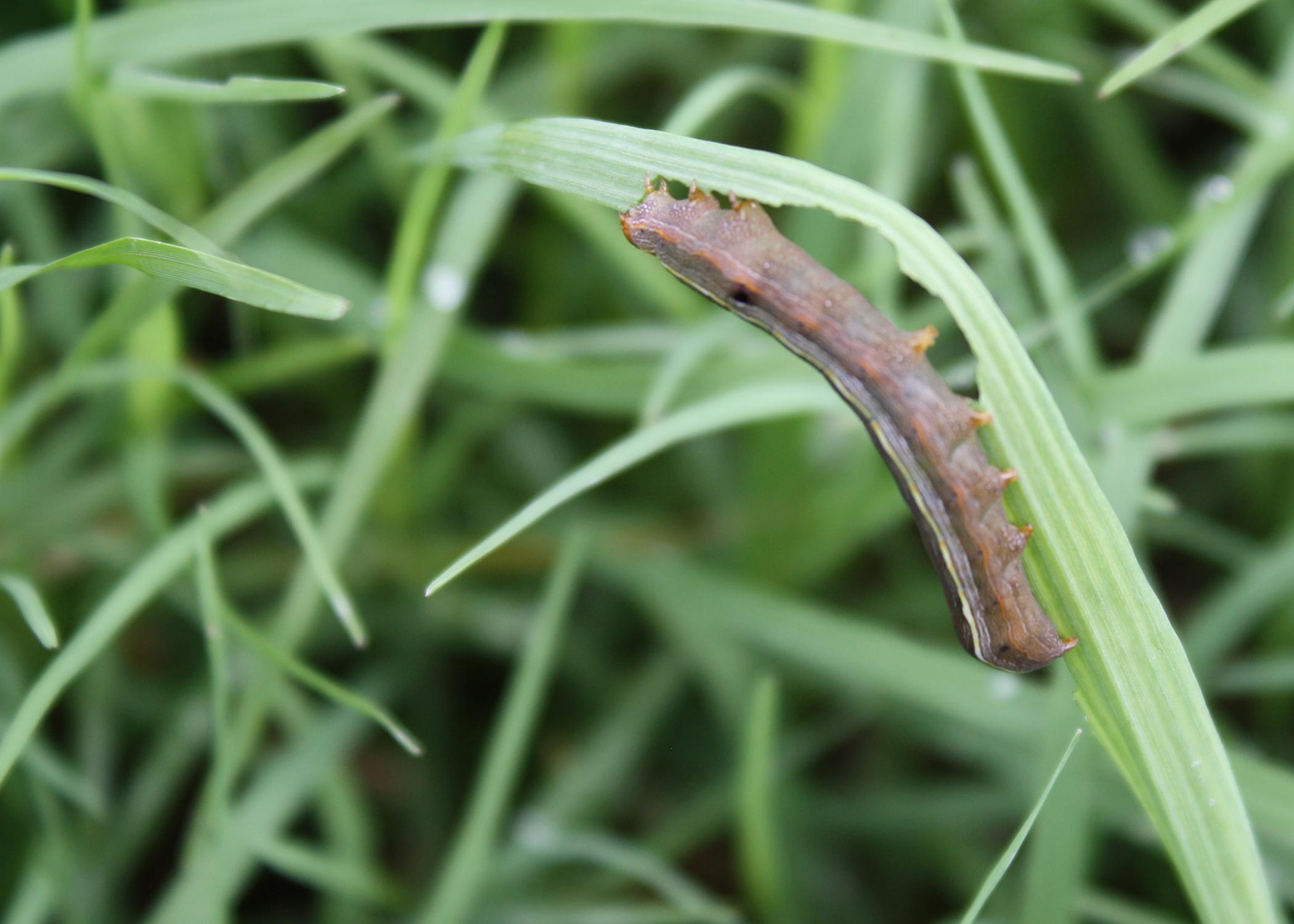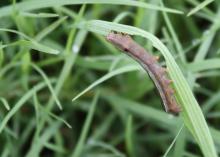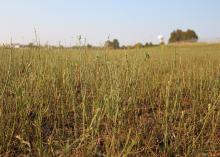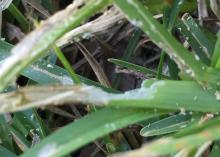Information Possibly Outdated
The information presented on this page was originally released on September 22, 2020. It may not be outdated, but please search our site for more current information. If you plan to quote or reference this information in a publication, please check with the Extension specialist or author before proceeding.
Fall brings caterpillars to state’s lawns, grasses
STARKVILLE, Miss. -- Every year, lawns and pastures become targets for late-summer grass-eating caterpillars, making it important to watch for the usual suspects and some culprits that are less common.
Fall armyworms show up like clockwork, causing significant losses to pastures when not managed properly. Tropical sod webworms are less of a pest but can still cause significant problems, mostly to grasses in the southern part of the state.
Jay McCurdy, turfgrass specialist with the Mississippi State University Extension Service, said fall armyworms typically appear when nighttime temperatures first begin to drop, an event sometimes marked by the first significant rainfall that breaks the late-summer drought.
“Fall armyworm damage appears when turf yellows or browns out quickly, within hours or a day or two,” McCurdy said. “Upon closer inspection, there will be insect larvae crawling while feeding on the leaf tissue.”
Damage often appears first as a circular region of stricken turf, but the damaged area grows quickly as the insects move.
Rocky Lemus, Extension forage specialist, said that, despite their name, fall armyworms can be a problem starting in late spring, but they are more prominent in late summer and early fall.
“Armyworm is a very destructive pest of forage crops, especially in annual grasses like crabgrass, forage sorghums and pearl millet, as well as in bermudagrass and legumes such as alfalfa,” Lemus said. “Bahiagrass is not a preferred forage crop by armyworms.”
Armyworms have five growth stages, and it is not until later stages that the caterpillars begin consuming large amounts of forage and cause the most damage.
“Armyworms like to feed in grasses with leafy material and high sugar concentrations,” Lemus said. “They can remove leaves in a matter of hours when there is a high infestation, leaving only the stems. Remaining forage develops brown spots that resemble drought damage.”
Another worm has made its unwelcome appearance in coastal counties this year. Blake Layton, Extension entomologist, said tropical sod webworms occur every year along the Gulf Coast in varying degrees of severity.
“In 2016, tropical sod webworms caused significant damage to home and commercial lawns and sports turf as far north as the Jackson area,” Layton said.
Tropical sod webworm adults are small, light-colored moths about a half-inch long, making them considerably smaller than fall armyworm moths.
“The moths are not strong fliers, but there can be a lot of them,” Layton said. “This may be the first thing homeowners notice, because the moths will fly up when someone walks through the yard, or you can see the moths resting in nearby shrubs.”
Mature caterpillars are about ½ inch long, also considerably smaller than fall armyworm caterpillars, and are a clear, green color with small, dark spots.
“Because they are smaller, it takes higher numbers to cause damage, but heavy infestations can result in ragged brown lawns that have been largely stripped of leaves,” Layton said.
Tim Ray, Extension agent in Harrison County, said coastal lawns are battling this caterpillar again in 2020.
“Clients will call asking about their lawns looking bad, and they comment that overnight it went from looking really good to looking really bad,” Ray said. “There is a lot of truth to it, as these worms can do damage very quickly.”
Ray has already heard from clients with problems from D’Iberville to Diamondhead and up to north Gulfport.
“I wouldn’t be surprised if they went much further towards Hattiesburg, although none have been confirmed that far this year that I’m aware of,” he said.
There are successful treatments for both of these caterpillar pests, but finding the insects early is a key component. Lawns and pastures are able to recover following treatment, but it sometimes takes until the next growing season for the damage to disappear.
MSU Extension has a variety of publications that offer advice on how to manage lawns and pastures and address insect or disease problems when they appear. Do a keyword search at http://extension.msstate.edu/publications.
Among the titles available are P2717, “Control Fall Armyworms in Pastures and Hayfields;” P2331, “Control of Insect Pests In and Around the Home Lawn;” and P1858, “Insect Control of Commercial Turf.”











